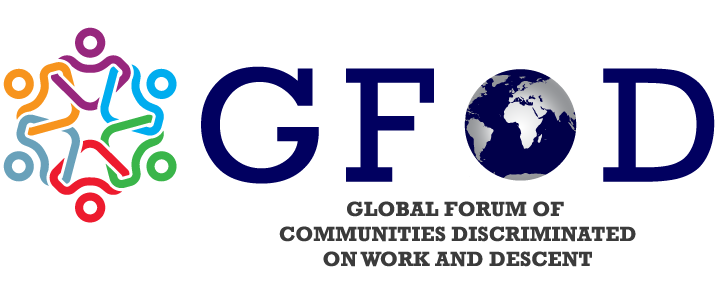What the Néma Death Tells Us About Health and Human Dignity in Mauritania
By Cheikh Sidati Hamadi, Senior Expert on CDWD Rights (GFoD), Essayist, Research Associate, Specialist in Structural Discrimination
The harrowing image of a woman giving birth outdoors in Néma, followed by her horrific death on June 9, 2025, should haunt the conscience of every citizen and policymaker in Mauritania. This was not just a tragic incident—it was a national failure. A woman died giving life—in public, in full view of the world—not because of some rare medical anomaly, but because of a healthcare system that has been allowed to rot in silence.
Her death, though shocking, is far from unique. It is the grotesque culmination of a systemic neglect that has condemned many other women to similar fates—only this time, the tragedy was witnessed in plain sight.
Mauritania today has one of the highest maternal mortality rates in the world—766 deaths per 100,000 live births—according to the UNFPA's State of World Population 2023 and the WHO's 2024 report on maternal mortality trends. This figure is more than three times the global average and significantly higher than the African average.
Compared to North African neighbours such as Algeria, Tunisia, and Morocco, which have rates between 70–110 deaths per 100,000 live births, Mauritania's performance is not just inadequate—it is scandalous. Even more damning is the fact that 89 percent of these maternal deaths are considered preventable by the World Health Organization. That is not just a statistic—it is a death sentence written by indifference and inaction.
The situation is just as bleak for newborns. According to UNICEF and the UN Inter-agency Group for Child Mortality Estimation, Mauritania's neonatal mortality rate stands at 39 deaths per 1,000 live births—almost double the global average and significantly higher than Sub-Saharan Africa's 27 per 1,000. It is also far above the rates recorded in North African countries, where the figure ranges between 9 and 12. These numbers are not just figures on a chart—they represent children who never had a chance, and mothers who paid the ultimate price for state neglect.
Nationally, only 60 percent of pregnant women receive the four prenatal visits recommended by the WHO, according to the Mauritania Demographic and Health Survey (DHS) 2019–2020. In Hodh Chargui, where the recent tragedy occurred, this figure drops to 45 percent. Postnatal care is even more scarce—fewer than 35 percent of women in the region receive a postnatal visit within two days of giving birth.
Only 67 percent of births are attended by skilled health personnel at the national level. In Hodh Chargui, that number falls to 53 percent, and in remote or impoverished CDWD communities, estimates from local organisations such as SOS Esclaves suggest it is closer to 40 percent.
The inequality of healthcare provision in Mauritania is both geographical and social. More than 55 percent of the nation's doctors are concentrated in Nouakchott (Ministry of Health, Annual Report 2023). In contrast, regions like Hodh Chargui, Guidimakha, and Assaba—where over 30 percent of the rural population resides—have less than 10 percent of the country's doctors. In Hodh Chargui, there is only one doctor for every 20,000 people; in Nouakchott, the ratio is 1 per 2,500. This is not just an imbalance—it is injustice, in plain sight.
Access to essential medicine is no better. A mere 48 percent of public health facilities in Mauritania have essential medicines in stock, according to WHO data. In addition, 70 percent of peripheral facilities lack ambulances or emergency transport services. What this means is that when a pregnant woman faces complications, she may simply be out of options. In many parts of the country, a health emergency becomes a death sentence.
Financial barriers further compound these structural failures. The World Bank estimates that 43 percent of health expenditures are paid directly by households (World Bank OOP data). In a country where over one-third of the population lives in multidimensional poverty (UNDP MPI 2023), these costs are often unaffordable. Worse, only 22 percent of the population has effective access to universal health coverage (World Bank UHC Index). This stands in stark contrast to Senegal at 53 percent, Morocco at 77 percent, and Tunisia at 84 percent.
Why is Mauritania's health system in such dire shape? Chronic underfunding is a key reason. Public health spending in the country stands at a meagre 3.5 percent of GDP, according to the World Bank. This is woefully short of the 15 percent commitment made under the African Union's Abuja Declaration (2001). By contrast, Algeria allocates 8.9 percent, Tunisia 7.5 percent, and even Senegal spends 5.8 percent of its GDP on healthcare.
Structural poverty only deepens this crisis. According to the UNDP, 36 percent of Mauritanians live in multidimensional poverty, with inadequate access to healthcare, clean water, education, and basic sanitation. The poorest and most marginalised regions—Hodh Chargui, Guidimakha, Gorgol, and the informal settlements around Nouakchott—bear the brunt of this failure. Among these communities, particularly those historically discriminated against like the CDWD, systemic barriers to healthcare are inseparable from economic and social marginalisation.
The link between gender inequality and access to healthcare is undeniable. UN Women Mauritania notes that each additional year of education for girls can reduce maternal mortality by 7 to 9 percent. Yet, formal employment among Mauritanian women remains at just 17 percent (World Bank, Gender Data Portal), and the female illiteracy rate stands at 53 percent (UNESCO Institute for Statistics, 2023). Economic dependency and poor access to education trap women in cycles of poverty that directly impact their health and that of their children.
This is why the tragedy in Néma must be seen for what it is: not a singular catastrophe, but the latest in a long line of avoidable deaths caused by policy failure, institutional neglect, and systemic inequality. It is unconscionable that a country that has ratified international commitments to Sustainable Development Goals, CEDAW, and the Abuja Declaration continues to allocate such paltry resources to its people's health.
To prevent the next Néma, Mauritania must initiate bold and urgent reforms. Public health spending must increase to at least 10 percent of the GDP by 2030. The government must launch an emergency healthcare infrastructure initiative focused on underserved regions, with special attention to training and deploying medical staff, ensuring the uninterrupted availability of essential medicines, and equipping at least 80 percent of peripheral health facilities with ambulances by 2028.
Universal health coverage must be strengthened, aiming for at least 50 percent coverage by 2027. Mobile maternal and child health units should be deployed in remote areas, in collaboration with local NGOs and civil society. Incentive programs must be created to attract skilled healthcare workers to rural areas, through housing support, salary bonuses, and professional development.
But more than that, the country must address the root causes of women's vulnerability through integrated strategies. Girls' education, access to microfinance, and women's economic empowerment are not optional—they are the foundation of equitable health. A dedicated national fund for maternal and neonatal health, supported by both public resources and international partners, should be created and protected.
The Néma tragedy is a brutal reminder of what is at stake. The right to health is not a rhetorical flourish—it is a matter of life and death. For too long, Mauritania's healthcare system has failed its people, especially its women. That failure is no longer hidden. It is visible, undeniable, and unforgivable.
To protect life is to protect the future. To reject the unacceptable is to reaffirm our humanity. The time to act is now.
Also Read: No Consent, No Childhood: Forced Conversions and the Collapse of Minority Rights in Pakistan


